Fortresses and forts 🢔 Fortifications 🢔 Archaeological wonders 🢔 Categories of wonders
Wonder
Massawa Old City
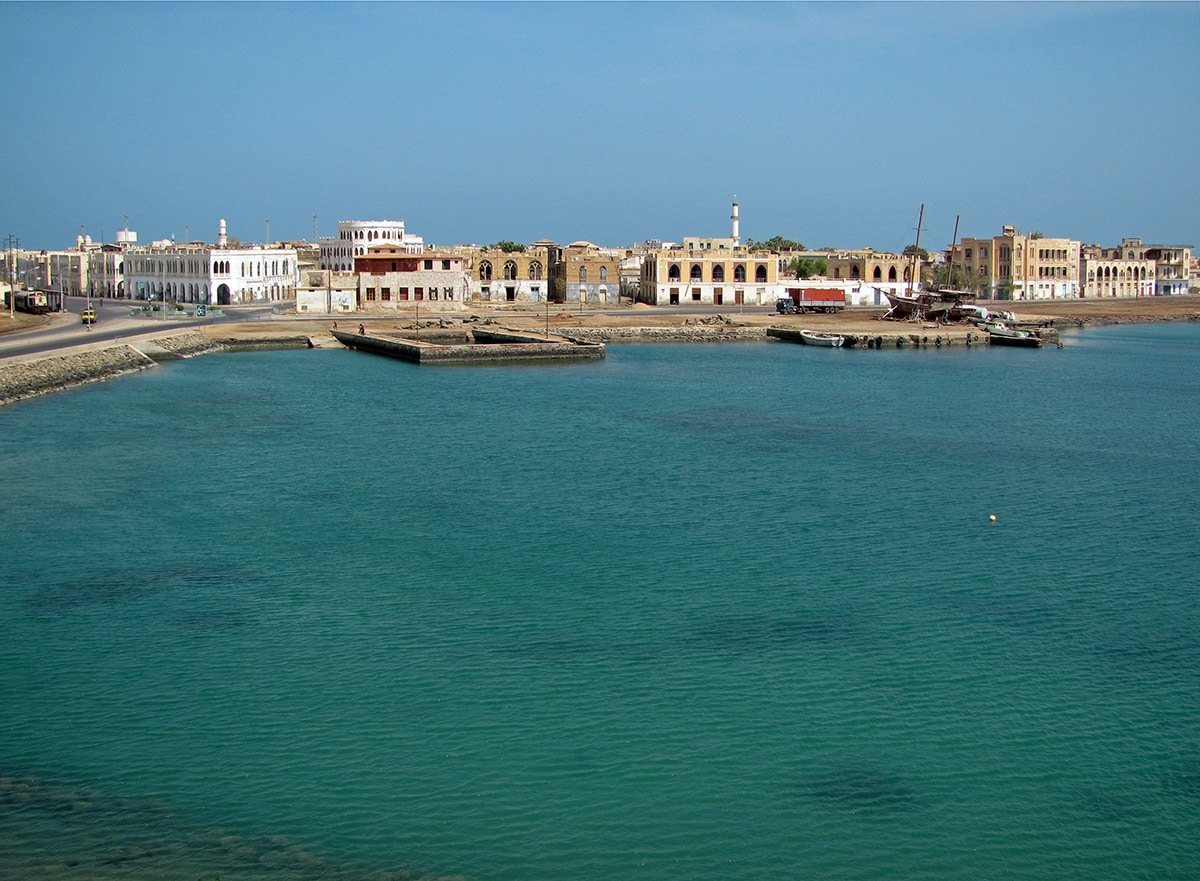
 In short
In short
Sturdy and tenacious, like Eritreans themselves, Massawa City has survived throughout the centuries. This old port city preserves an ensemble of wonderful Ottoman architecture.
 46.3%
46.3%
GPS coordinates
Location, address
Name in Ge’ez
Founded
Period of flourishing
Area
Map of the site
If you see this after your page is loaded completely, leafletJS files are missing.
 In detail
In detail
Urban fabric
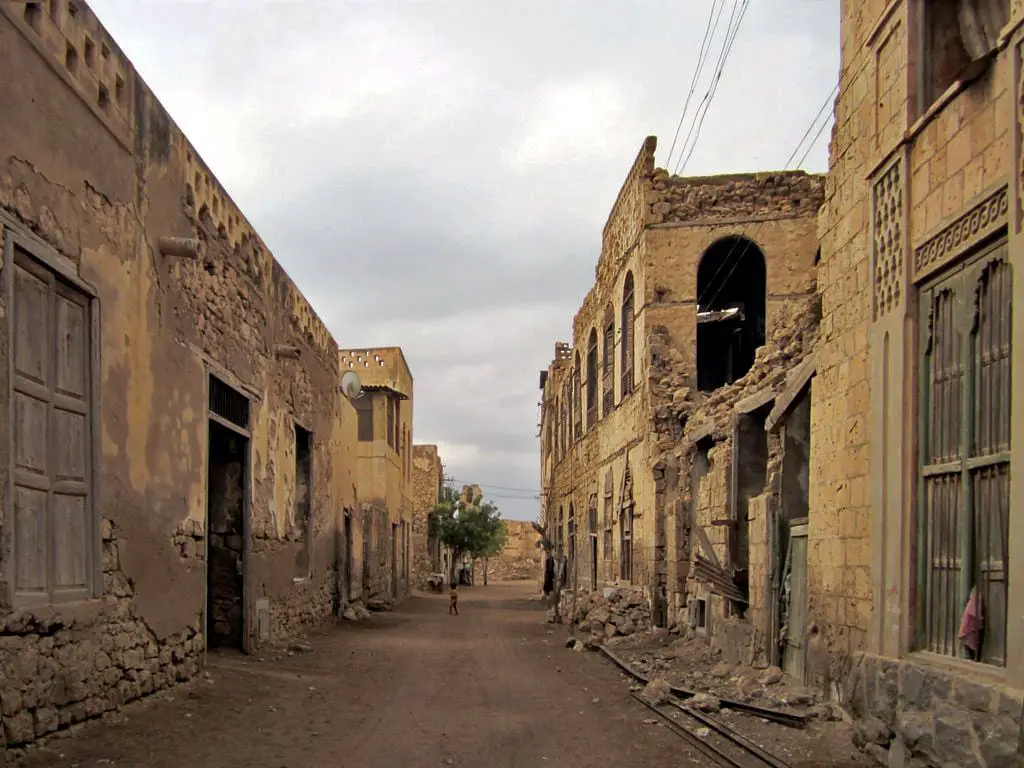
Massawa has two historical districts – each on its own island.
The oldest and most valuable is the Old City on Batse (Massawa) Island: a coral island without fresh water sources, covered with valuable Arabic and Ottoman architecture.
440 m long causeway leads to the other part of historical city – Taulud Island. This island was uninhabited until the late 19th century, when Italians started construction here. This island is connected to the mainland with 1030 m long causeway.
The most valuable buildings in Massawa are:
- Shrine of Sahaba – Old City. Small shrine in the site, where, according to legends, the followers of prophet landed in 615 AD. It is believed that this shrine was built back in those times – thus it could be the oldest constructed Islamic shrine in the world, but this is not proved.
- Sheikh Hanafi Mosque – Old City. The oldest mosque in Eritrea, built in the 15th century AD.
- Bazaar – Old City. Fine Ottoman building.
- Imperial Palace – Taulud. Ornate building constructed for French consul Werner Munzinger in 1872 – 1874. Now in ruins.
- Banco d’Italia – Taulud. Gorgeous building, constructed in the 1920s.
Those who live in Massawa, experience very hot, humid climate. Average mean temperature here is 29.7 °C, average temperature in July is 35 °C.
History
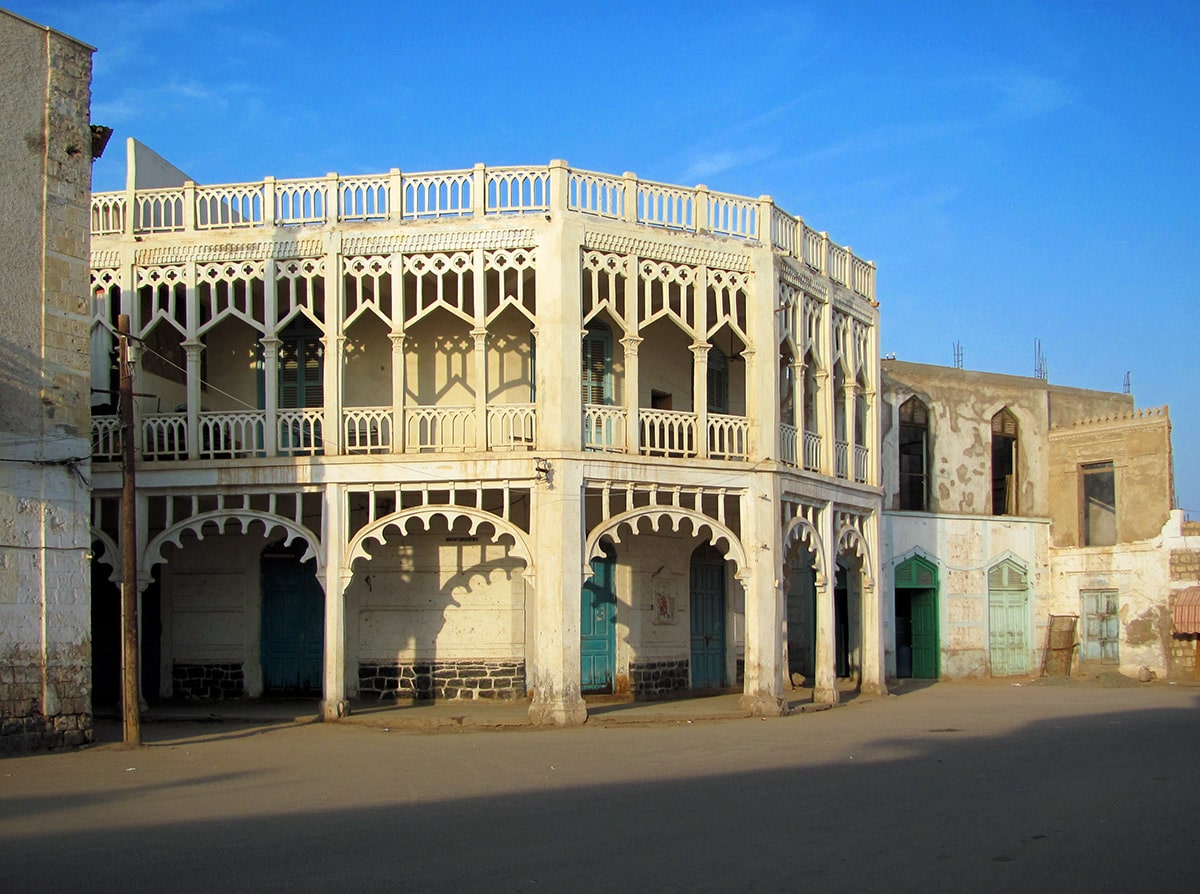
The beginnings of Massawa are shrouded in millenia long past. It is known that in the times of Axumite Empire (first centuries AD) here was small village, which was overshadowed by Adulis port which was located some 50 km to the south. Now Adulis is in ruins.
Since its establishment Massawa was developed as a trade city and it has served for multiple owners.
Before Ottomans
Umayyad Caliphate captured the settlement after the fall of Axum in 702 – 750 AD. In those times the city was named Bade (or Base) in Arabic writings.
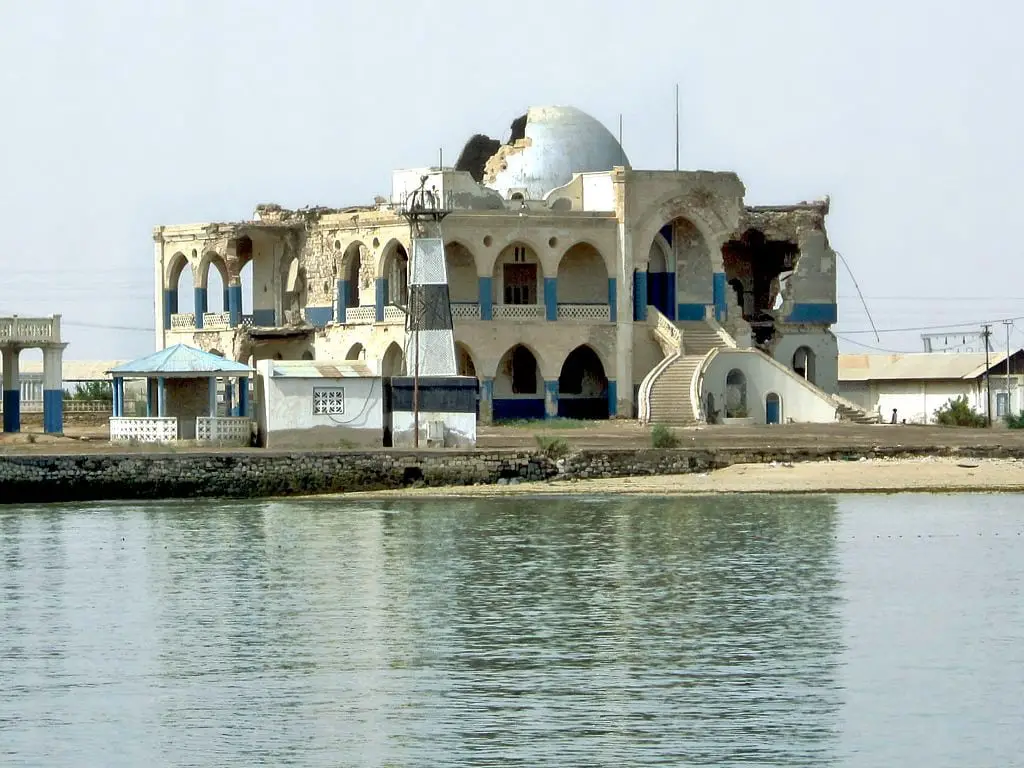
Local Beja people formed their kingdom in 740 AD and soon took over Massawa and ruled it until the 14th century, when another regional power – Medri Bahri Kingdom rised. This kingdom took control of Massawa and its area in several time periods between the 14th and 19th century. Once more local power – Balaw – also ruled the town for several periods in the 12th – 15th century AD. In their time here was built the oldest mosque in Eritrea – Sheikh Hanafi Mosque and several more Islamic buildings. In this time Venetian merchants frequented here too.
Ottoman times in Massawa
Ottoman general Özdemir Pasha captured Medri Bahri kingdom and Massawa city in 1557, outmaneuvering Portuguese. Initially, Massawa became the capital of Habesh Eyalet – a large territorial unit along both coasts of the Red Sea, but soon the capital was moved to Jeddah in present-day Saudi Arabia.
Main benefits from the newly acquired territory were slaves, food, iron, and also pearls, especially in the Dahlak Archipelago not far from Massawa. Ottomans never acquired much power on the mainland of present-day Eritrea but retained control over Massawa, thus controlling trade in this region. This area did not bring much profit and interest in it decreased. Gradually, at the end of the 16th century, the Ottoman influence in this part of the Red Sea decreased. Control over Massawa and its surroundings was handed over to Balaw who were made answerable to Ottomans.
This was the time when the old town of Massawa was built – here were constructed fine buildings in an Ottoman style. Dry coral was used for walls, roof, and foundation, there was imported wood for beams, window shutters, balconies. These old buildings persist up to this day, withstanding time, earthquakes, bombardment, and neglect.
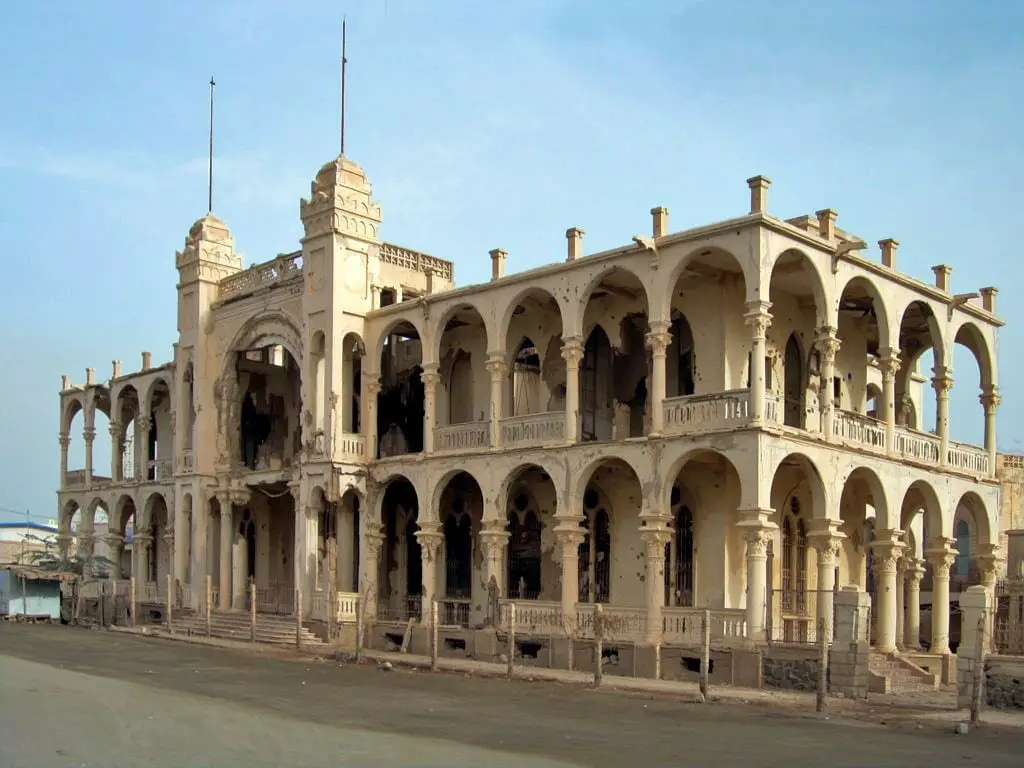
Modern times
Egypt took over Massawa with Ottoman consent in the 19th century.
At the end of the 19th century started the dominance of Europeans. British took over the control of this area and in 1885 handed over the city to Italians.
Italians had great plans for this city. They made it the capital of Eritrea and built a modern port. Massawa evolved into a multinational trade city. Main developments took place outside the Old City, on Taulud island and mainland.
In 1897 the capital was moved to Asmara and the development of Massawa slowed down. In 1921 the city was destroyed by Massawa earthquake and port recovered only in 1928, further slowing down the ambitious development of Italian colony.
Nevertheless Massawa evolved into the largest and safest port on the east coast of Africa. In 1938 there was started an ambitious plan for the development of a very modern port city.
City and port suffered heavily during the World War II, sunken Italian and German ships blocked the port.
After the war Eritrea entered into a federation with Ethiopia and landlocked Ethiopia gained access to the sea. Later Ethiopia forcibly annexed Eritrea, provoking long-lasting civil war. During this war, the port of Massawa did not operate. The city was bombed by Ethiopians in 1990, creating much damage which is not fully repaired up to this day. Further bombardment took place in 1998 – 2000.
Now Massawa is the main port city of the nation of Eritrea, the second-largest city in the country.
 Linked articles
Linked articles
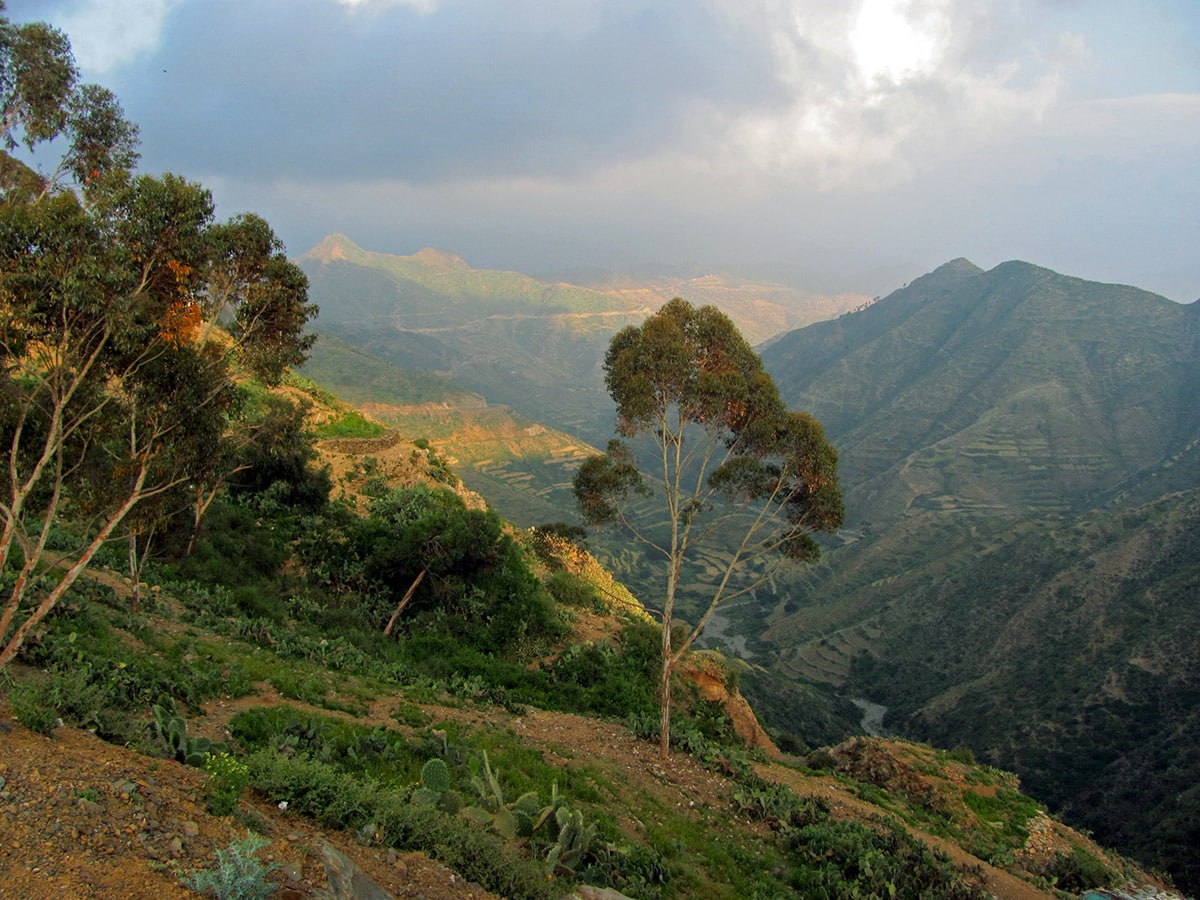
Wonders of Eritrea
Eritrea differs from most African countries regarding its landmarks. Contrary to most African countries here are few breathtaking natural landmarks but – a huge variety of excellent man-made landmarks.
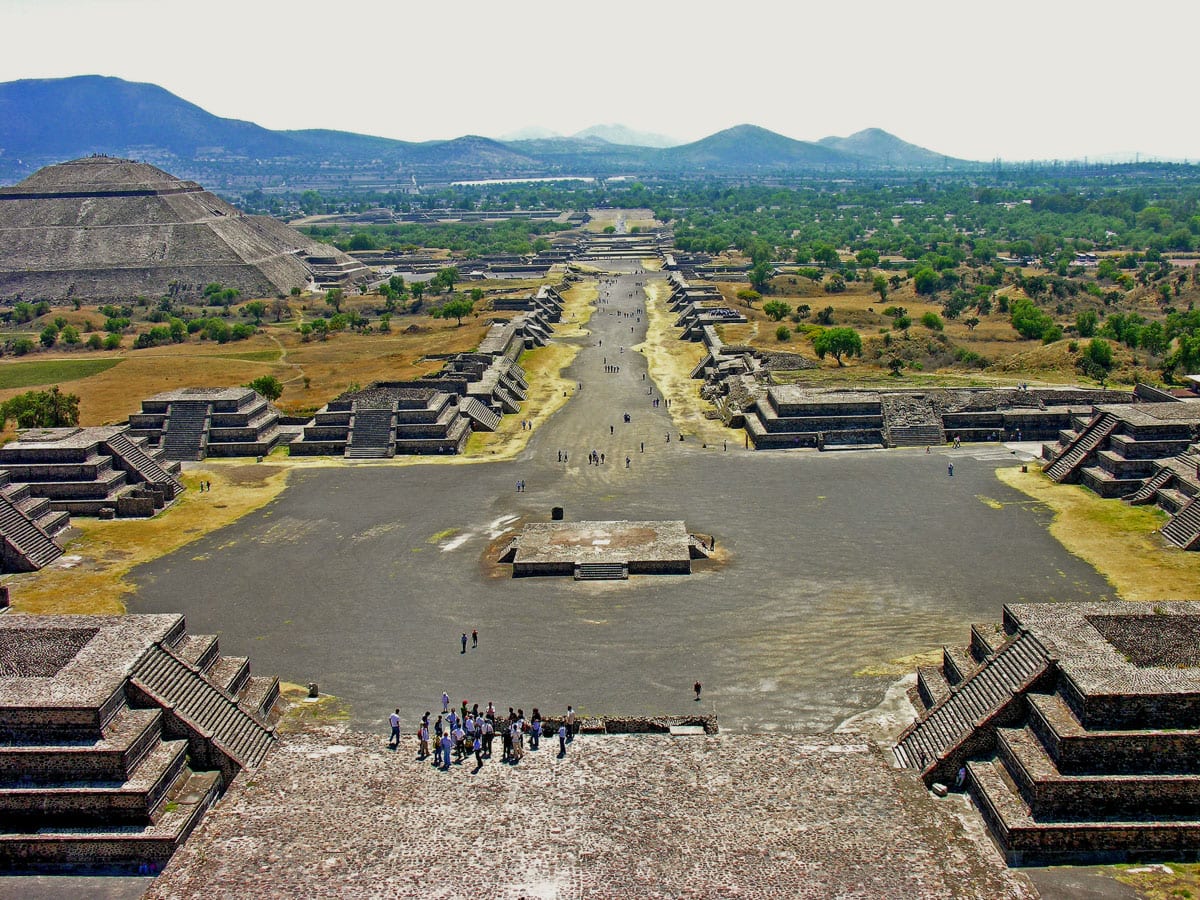
Ancient cities and towns
It turns out that urban planning is a very old profession. The urban fabric of ancient settlements – their structure and evolution gives a lot of food for thoughts about the nature of humans and civilization.
Wondermondo includes in the category of ancient cities and towns those settlements which have developed as urban areas at least 1500 years ago: around 500 AD.
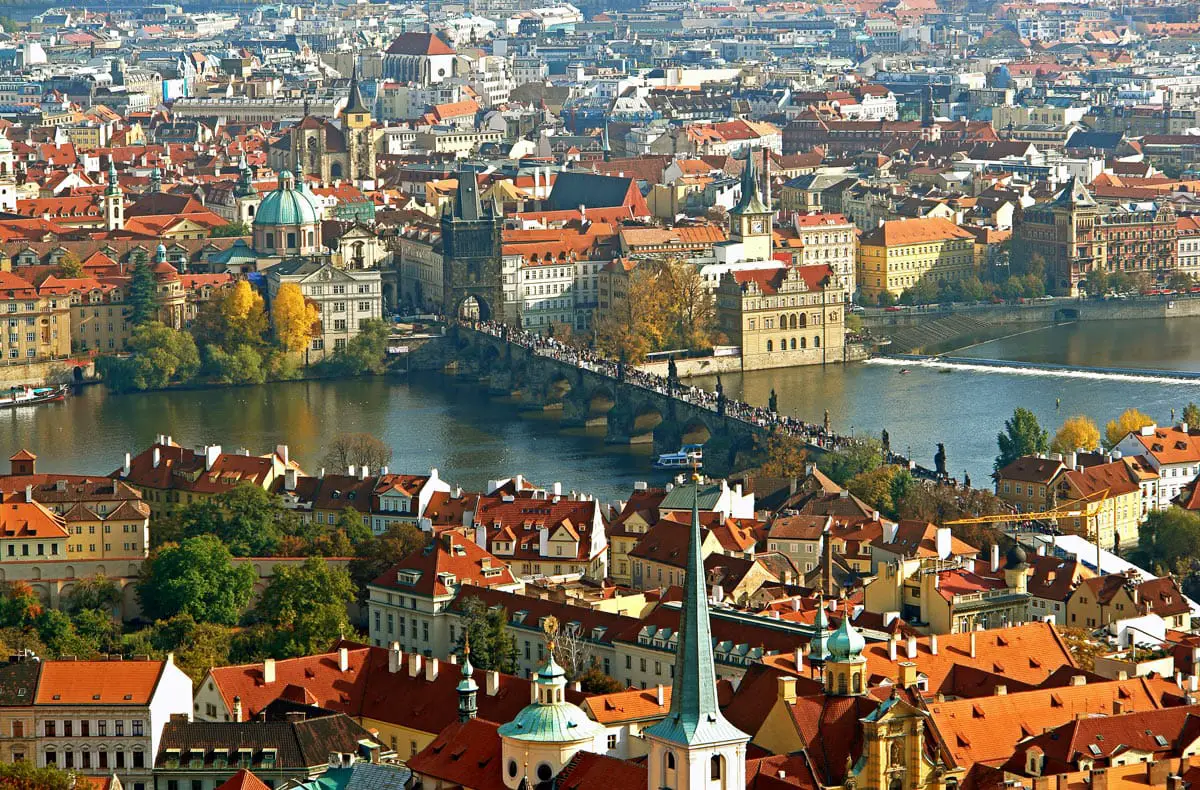
Cities and towns
Many of the most popular and exciting landmarks in the world are cities and towns. Millions of tourists are attracted to such cities as Venice, Florence, Prague, and Jerusalem. They never fail to impress and one will always find something new and unexpected here.
 Recommended books
Recommended books
The Red Sea: In Search of Lost Space
The Red Sea has, from time immemorial, been one of the world’s most navigated spaces, in the pursuit of trade, pilgrimage, and conquest. Yet this multidimensional history remains largely unrevealed by its successive protagonists. Intrigued by the absence of a holistic portrayal of this body of water and inspired by Fernand Braudel’s famous work on the Mediterranean, this book brings alive a dynamic Red Sea world across time, revealing the particular features of a unique historical actor.


